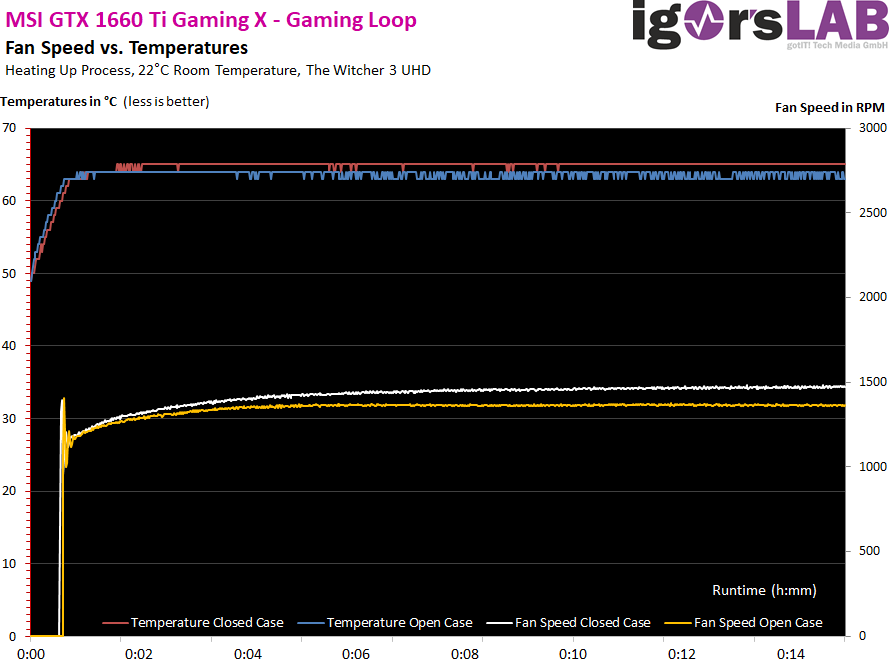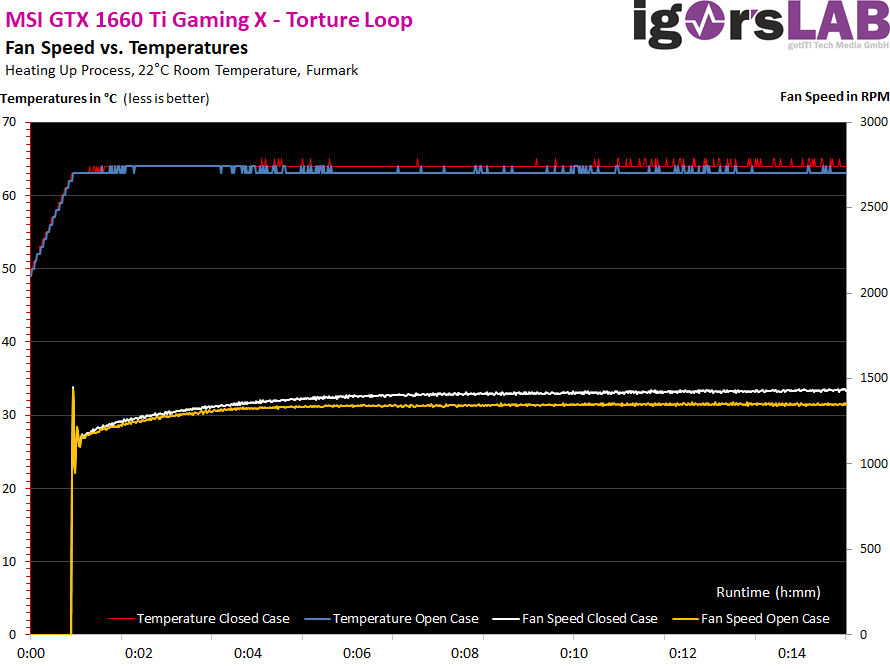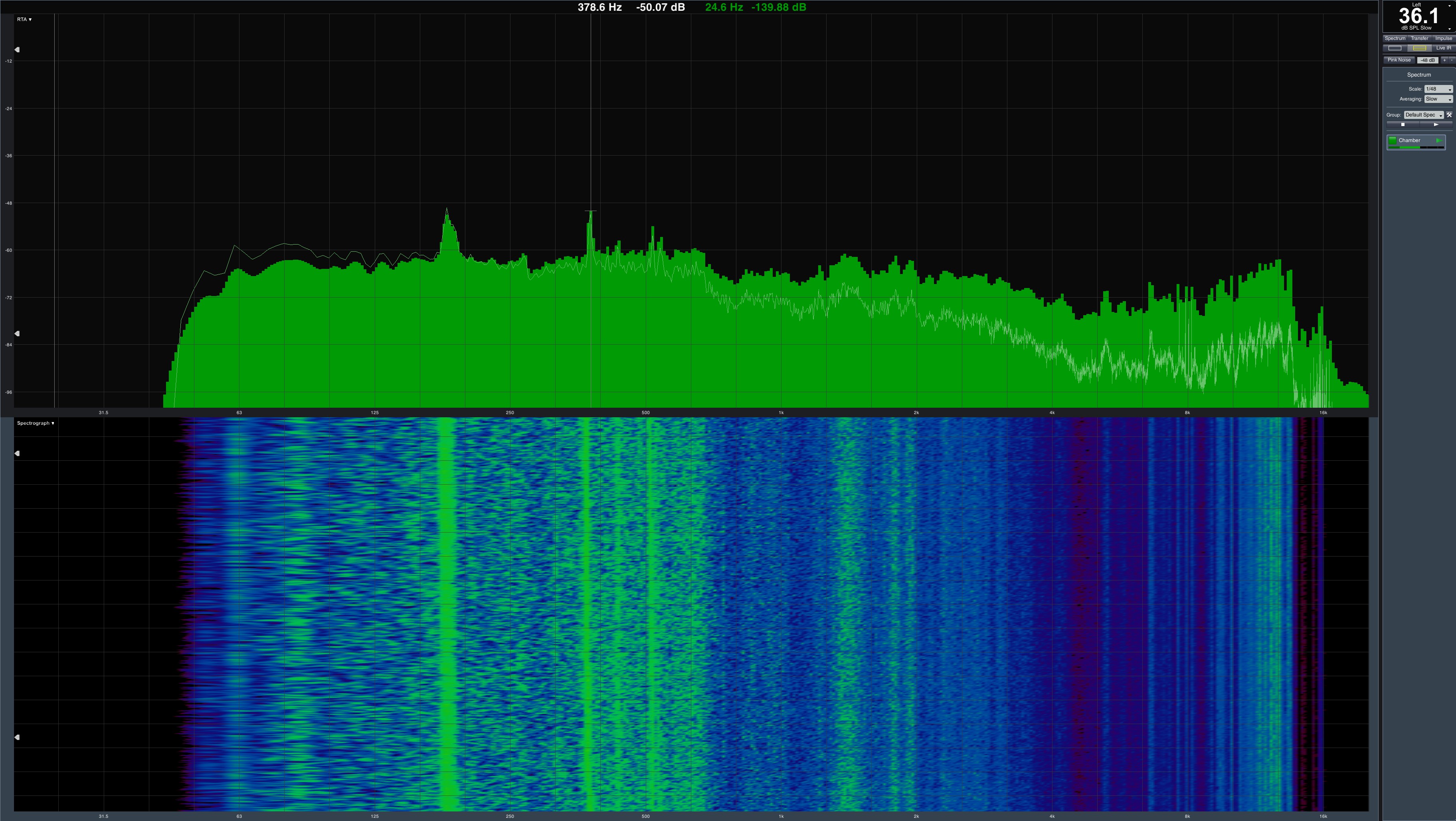There is a cleanly implemented fan stop, the fans run with approx. 1100 rpm (start pulse). The threshold value for the connection is between 62 and 63 degrees, i.e. just below the maximum temperature, which can also be seen by the curves. However, there is no separate fan control with (if necessary) two different fan curves as with the GeForce RTX. The card remains quite quiet even in a closed housing with less than 1500 rpm.

In the stress test, by the way, the curves look very similar.

Let's look at the measured values again in direct comparison to the Founders Edition as a tabular listing:
| MSI GeForce GTX 1660 Ti Gaming X |
|
|---|---|
| Fan speeds Open Benchtable Maximum | 1388 rpm (Gaming, Peak) |
| Fan speeds Open Benchtable Average | 1372 rpm (warmed up) |
| Fan Speeds Closed Case Maximum | 1476 rpm (Gaming, Peak) |
| Fan Speeds Closed Case Average | 1461 rpm (warmed up) |
| Noise Emission (Air) Average | 36.1 to 36.4 dB(A), Closed Case (Peak) |
| Fan stop |
Fan stop |
| Sound characteristic / hearing impression | noisy, restrained, light engine noise |
| Coil-feathers/electric noises | Audible at lower fan speeds. |
Sound Spectrum
The measured 36.1 dB(A) is based on the measured 1388 rpm in the closed housing. We have applied the same gaming load to the open set-up in the measuring room, but the fans are limited to approx. fixed at 1400 rpm in order to be able to adjust this value exactly. The result is impressive, because you don't really hear much
You can see very well in the video during the warm-up, which frequency ranges are speed-dependent. On the far right you can see the constantly high spikes of the voltage converters and in the middle the demolition noises of the air flow. You can leave that.
- 1 - Architektur, Testmuster, Testsystem
- 2 - Teardown und Analyse
- 3 - Benchmarks bei 1920 x 1080 (Übersicht)
- 4 - Benchmarks bei 1920 x 1080 (Einzelergebnisse)
- 5 - Benchmarks bei 2560 x 1440 (Übersicht)
- 6 - Benchmarks bei 2560 x 1440 (Einzelergebnisse)
- 7 - Leistungsaufnahme im Detail
- 8 - Temperatur, Takt, Infrarot
- 9 - Lüfter und Lautstärke
- 10 - Zusammenfassung

































Kommentieren